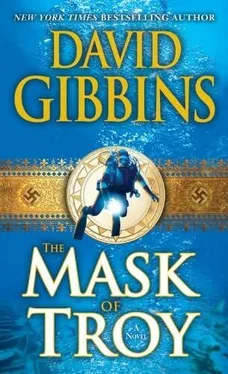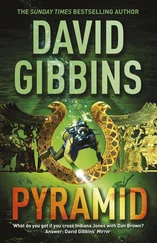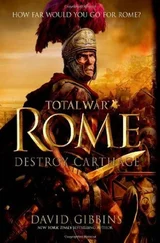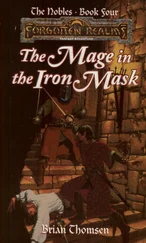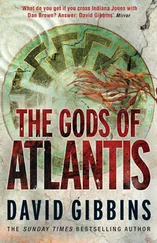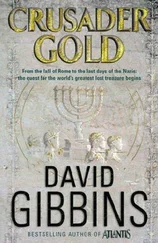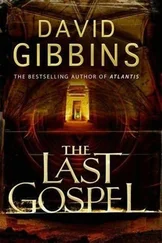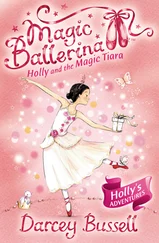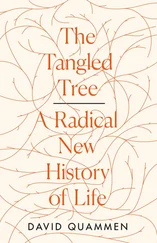David Gibbins - The Mask of Troy
Здесь есть возможность читать онлайн «David Gibbins - The Mask of Troy» весь текст электронной книги совершенно бесплатно (целиком полную версию без сокращений). В некоторых случаях можно слушать аудио, скачать через торрент в формате fb2 и присутствует краткое содержание. Жанр: Триллер, на английском языке. Описание произведения, (предисловие) а так же отзывы посетителей доступны на портале библиотеки ЛибКат.
- Название:The Mask of Troy
- Автор:
- Жанр:
- Год:неизвестен
- ISBN:нет данных
- Рейтинг книги:3 / 5. Голосов: 1
-
Избранное:Добавить в избранное
- Отзывы:
-
Ваша оценка:
- 60
- 1
- 2
- 3
- 4
- 5
The Mask of Troy: краткое содержание, описание и аннотация
Предлагаем к чтению аннотацию, описание, краткое содержание или предисловие (зависит от того, что написал сам автор книги «The Mask of Troy»). Если вы не нашли необходимую информацию о книге — напишите в комментариях, мы постараемся отыскать её.
The Mask of Troy — читать онлайн бесплатно полную книгу (весь текст) целиком
Ниже представлен текст книги, разбитый по страницам. Система сохранения места последней прочитанной страницы, позволяет с удобством читать онлайн бесплатно книгу «The Mask of Troy», без необходимости каждый раз заново искать на чём Вы остановились. Поставьте закладку, и сможете в любой момент перейти на страницу, на которой закончили чтение.
Интервал:
Закладка:
‘And women,’ Cameron said.
Stein turned to them. ‘Two weeks ago, the US 8th Infantry Division stumbled on a sealed-up copper mine at Siegen, near Aachen. Inside they found a huge cache of art treasures, old masters by Rembrandt, Rubens, Van Dyck, as well as priceless artefacts, including the crown of Charlemagne. Some were local cathedral treasures there for safekeeping during the war, but there was also art looted by the Nazis. It was just what the Monuments, Fine Arts and Archives section had been looking for. It was our breakthrough. That’s why I was rushed here. We believe there will be many more such places, dozens, hundreds, some of them in mines and other makeshift hiding places, others in purpose-built bunkers.’
‘What could hiding art conceivably have to do with this place? With all this horror?’ Cameron asked, gesturing around them, then letting his hand drop.
‘The all-encompassing ideology,’ Stein said grimly. ‘The looting of art, the destruction of art, is all part of the same ideology, the Nazi programme of hate. In 1907, Hitler was rejected by the Vienna Academy of Fine Art. He was a competent artist, but lacked imagination. Two of the academicians were Jewish. Hitler never forgot that, nor the modernist art he never had the flair to create. When he came to power, he ridiculed it, destroyed it or had it sold out of Germany. Art was to be cleansed, just as race was to be cleansed. This – what we see around us, the horror this represents – was Hitler’s ultimate canvas. Absolute ideology. Absolute realism.’
Mayne looked at Stein. ‘And stolen antiquities?’
‘On the way in, you asked about Schliemann’s treasure,’ Stein replied, eyeing him shrewdly. ‘I said nothing. But now I think I owe you an explanation. Heinrich Himmler ran a department known as the Ahnenerbe, the Department of Cultural Heritage. Before the war they went all round the world searching for evidence of Aryan roots, for the origins of the master race. In Europe they excavated sites they thought would reveal Germany’s heroic past. They became fixated on kings, on rulers who seemed to display the characteristics the Nazis most admired, absolute power, absolute ruthlessness. The emperors of Rome were a huge inspiration. But they also looked further back, to the semi-mythical kings of prehistory. Any artefacts associated with those kings had huge lustre in the eyes of the Nazis, and they would do anything to get hold of them, to glorify their heroes.’
‘So you’re saying that anything of that treasure from Schliemann would have huge cachet in Nazi eyes.’
Stein nodded. ‘Huge.’
‘It’s time we showed Cameron that drawing.’ Mayne took out a sheet of notepaper from his tunic pocket, unfolded it and held it for the others to see. The sheet had been torn from a German order book, with Gothic typeface at the top, and was thin, almost diaphanous, so the grey sky seemed to suffuse the drawing with depth, with dimensionality. The lines were precise, in crayon. In the centre were simple sketches of a man in a dark suit and a woman, gaily coloured. Between them was a little girl, holding hands with them. Below the adults were two words, Mama and Papa. But it was the object drawn above the child’s head that was so extraordinary. It was golden, luminous, with a silvery interior, and the child was looking up at it.
‘ Good God,’ Cameron whispered. ‘It’s a swastika. But a reverse swastika. And those colours.’ He looked up. ‘Why would a Jewish child draw that?’
Mayne looked at Stein, then at Cameron. ‘We assume it’s something she’s seen. What you were saying earlier. Somehow associated with trauma. But we’re putting two and two together and thinking it’s here, somehow associated with that bunker.’
Cameron looked at them. ‘Have you seen this before? This symbol?’
Stein spoke quickly. ‘We don’t know what it means. Not yet. But we’ve had it described to us, very exactly. The interrogation of a top Nazi official. The details are top secret. That official is no longer alive. That’s how deadly serious this is.’
Mayne stared at Stein, his mind in a whirl. It had been seen somewhere before. When should he tell Stein? About the treasure the old foreman had seen under the Mask of Agamemnon? A treasure that had become a dread symbol in Nazi Germany? Stein had spoken of the Nazi fervour for ancient mythical kings, for Aryan roots, and everyone knew their fetish for symbols and secrecy, for codes and decrees. Was that what had happened? Somehow, someone had found this treasure, symbol of Agamemnon, symbol of Troy, secreted away in Germany by Schliemann, and made it instead into a symbol of hate, of some hidden horror that Stein could not bring himself to tell, or did not even yet know. It was suddenly imperative that they find out more. Mayne turned to Cameron. ‘Where is the girl who drew this likely to be found, if she’s still alive?’
Cameron pointed. ‘That hut ahead. That’s where the children are, the Kinderbaracke. A Red Cross nurse is looking after them. Come on.’ He led them around the hut to a line of stretchers in the shade, facing away from the camp, away from the bodies and the horror. Each stretcher held a small form, beneath a blanket. Two British soldiers with Sten guns slung over their backs crouched among the children, offering cups of water. A woman got up from beside one stretcher, gently raised the blanket to cover the head of the still form beneath, then bowed her own head for a moment. She was wearing dungarees, gaiters and rubber boots like Cameron’s, with her hair tied in a scarf. She looked up as they approached. ‘Helen,’ Cameron said quietly, gesturing back at the two officers and Lewes. ‘Just a few questions. We won’t take up any of your time.’
Mayne saw that the nurse’s eyes were tired and grey like Cameron’s. She nodded, but remained where she was, turning away from the dead child to the one on the stretcher on the other side, holding the emaciated head in one hand and a cup in the other, dripping water into the open mouth. She put down the cup and gently raised the child’s left arm, showing a black smudge below the elbow. ‘That’s the Auschwitz tattoo,’ she said. ‘They all have it. Their parents are gone, murdered by the Nazis, in the Polish ghettos, in Krakow, Warsaw, in the death camps. According to the adult inmates we’ve spoken to, almost all of the children who arrived at Auschwitz were gassed immediately. These are the ones who survived selection. Some are Dutch children of Jewish families in the diamond trade, kept alive by the Nazis for ransom. Others are children who had arrived in Auschwitz before the gas chambers were built, and had made themselves useful in the camp. They somehow survived the march from Auschwitz a few months ago. We brought them here, away from the barracks, to get them away from the typhus.’
Mayne showed her the drawing. ‘Do you know who did this?’
She glanced at it. ‘Several of them have done drawings like that. It’s the first thing they draw when we give them crayons. Images of their parents. Sometimes on the railhead at Auschwitz, where the Nazi doctors separated parents and children. It’s as if…’ She paused, just as Cameron had done, at a loss for words. ‘It’s as if that moment lives with them for ever, frozen in time, as if all that’s happened afterwards is a nightmare. They want to wake up and go back. So they draw it, the last image of their parents. It’s as if liberation has allowed them to see an image of happiness that the survival instinct has denied them for so long, and they become fixated on it, see nothing else. It’s heartbreaking.’ She glanced at the picture. ‘Yes. That was the girl with the harp. She’s over there.’
They followed her gaze. About fifty yards away they saw a figure seated on a chair, with her back to them, in the middle of open ground. Mayne could see her shorn head and thin neck, but not her face. She was wearing an outsized army shirt and trousers, evidently given to her by the soldiers, but she was barefoot. Her hands lay on her knees, and she seemed motionless, staring ahead. ‘She’s about seventeen,’ the nurse said. ‘According to the others, she survived Auschwitz because she worked in a place called Block Twelve. She was a sex slave, used by the SS guards and privileged inmates. Shortly before we arrived here, the female camp leader, the Lagerfuherin, found out what the girl had been at Auschwitz, and took her into the forest one night along with several of the guards. I can’t bear to tell you what they did to her. After the camp’s surrender, several inmates who went after the guards found her in the forest and brought her here. She hasn’t spoken a word, but she did do that drawing. She’s done many like it, almost identical, but that’s the only one I’ve seen with the swastika above her parents. Odd. It’s reversed. But they have seen that hated thing so much, it must be burned into their minds. Who knows why she drew it there.’
Читать дальшеИнтервал:
Закладка:
Похожие книги на «The Mask of Troy»
Представляем Вашему вниманию похожие книги на «The Mask of Troy» списком для выбора. Мы отобрали схожую по названию и смыслу литературу в надежде предоставить читателям больше вариантов отыскать новые, интересные, ещё непрочитанные произведения.
Обсуждение, отзывы о книге «The Mask of Troy» и просто собственные мнения читателей. Оставьте ваши комментарии, напишите, что Вы думаете о произведении, его смысле или главных героях. Укажите что конкретно понравилось, а что нет, и почему Вы так считаете.
